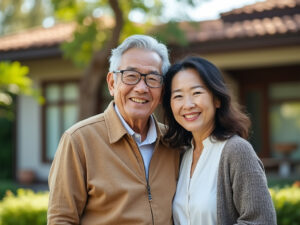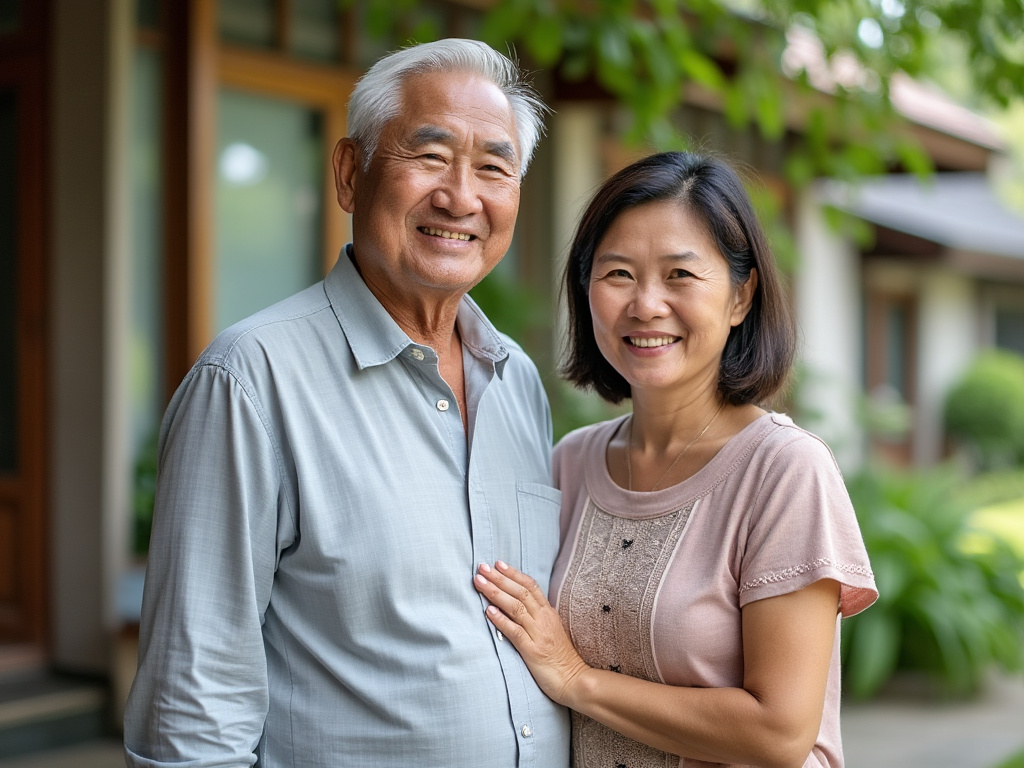A Haven for the Elderly
 In the verdant landscapes and serene settings of Thailand, a new horizon for senior living is emerging, tailored precisely for the needs of an aging population. As the demographic landscape of Thailand shifts with an increasingly elderly populace, senior living facilities are becoming a pivotal part of the real-time estate and healthcare sectors. These facilities are designed not just for accommodation but for enhancing the quality of life, focusing on accessibility, health care, and fostering a vibrant community life. Here’s how Thailand is adapting to this demographic change:
In the verdant landscapes and serene settings of Thailand, a new horizon for senior living is emerging, tailored precisely for the needs of an aging population. As the demographic landscape of Thailand shifts with an increasingly elderly populace, senior living facilities are becoming a pivotal part of the real-time estate and healthcare sectors. These facilities are designed not just for accommodation but for enhancing the quality of life, focusing on accessibility, health care, and fostering a vibrant community life. Here’s how Thailand is adapting to this demographic change:
The Rise of Senior Living in Thailand
With an aging population, Thailand has seen a significant increase in the demand for specialized living arrangements that cater to the elderly. The country, known for its hospitable culture, has embraced this trend by developing senior living facilities that combine traditional Thai warmth with modern amenities:
-
Cultural Respect for Elders: In Thai culture, the elderly are highly respected, and this respect is reflected in the design and operation of senior living facilities. These institutions aren’t just places to live; they are communities where seniors can continue contributing to society, engaging in cultural activities, and maintaining their social status.
-
Health and Wellness: Facilities in Thailand prioritize health care. Many homes have on-site medical staff, wellness programs, and partnerships with local hospitals for advanced care when needed. This focus ensures residents can receive timely medical attention in a comfortable, home-like environment.
-
Accessibility: Recognizing the mobility challenges that come with age, senior living facilities in Thailand are constructed with thoughtful accessibility in mind. Features like ramps, handrails, non-slip flooring, and wheelchair-friendly layouts are standard, ensuring safety and ease of movement for all residents.
-
Active Lifestyle: Thailand’s senior living facilities aren’t just about care; they’re about living. Residents are encouraged to stay active through various activities like yoga, Tai Chi, gardening, and organized trips. These activities are designed to keep both mind and body healthy, reflecting the Thai ethos of balance and well-being.
Key Developments and Trends
The sector’s growth can be traced through several notable trends and developments:
-
Luxury Retirement Homes: Places like Chiang Mai have seen the rise of luxury retirement homes where amenities might include private pools, gourmet dining, and cultural enrichment programs, appealing not just to local seniors but also to expatriates looking for a retirement haven.
-
Community Integration: Modern facilities often integrate community living aspects, where seniors can interact not only with peers but also with younger generations through programs like intergenerational learning spaces or community service initiatives.
-
Innovative Care Models: From dementia care to palliative services, Thai senior living facilities are adopting international best practices while tailoring them to fit local needs, ensuring personalized care plans for each resident.
Economic and Social Impact
The economic implications of this sector are significant:
-
Job Creation: Senior living facilities create numerous jobs, from healthcare professionals to hospitality staff, contributing to local economies.
-
Real Estate Market: The demand for properties designed for senior living is pushing developers to innovate, thereby stimulating the real estate market with specialized housing solutions.
-
Tourism: Thailand’s appeal as a retirement destination has also boosted medical tourism, where seniors might first visit for health treatments and then consider staying long-term.
Challenges and Opportunities
While the sector grows, it faces challenges like:
-
Regulatory Framework: Ensuring that facilities meet both local and international standards for care.
-
Cultural Adaptation: Balancing traditional family care values with modern, institutional care settings.
However, these challenges present opportunities for:
-
Innovation in Care: Developing new models of care that respect cultural traditions while providing high-quality services.
-
Sustainability: Incorporating sustainable practices in building and maintaining these facilities, aligning with Thailand’s broader environmental goals.
Conclusion
Thailand’s senior living facilities are not just adapting to an aging population; they are redefining retirement. By integrating health care, community living, and an active lifestyle, these facilities offer a compelling blend of care and independence. For those looking at retirement options, Thailand presents a unique proposition where one can enjoy the twilight years amidst beauty, culture, and community.

